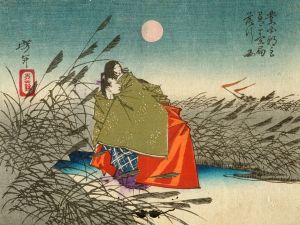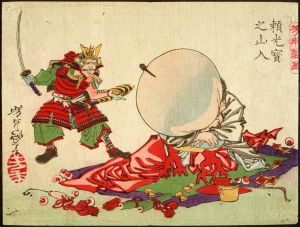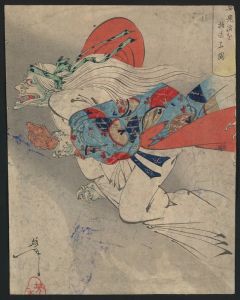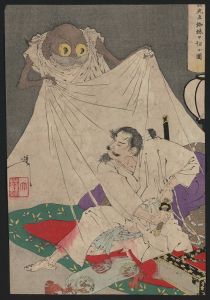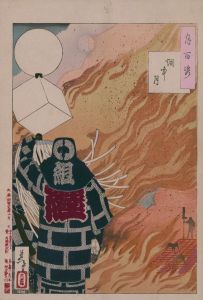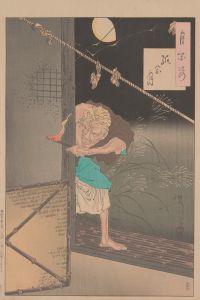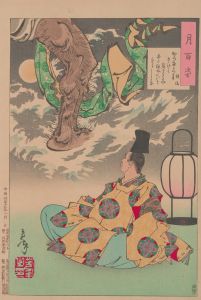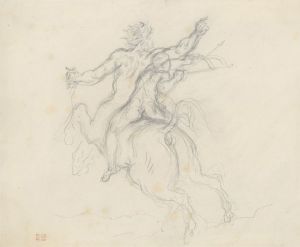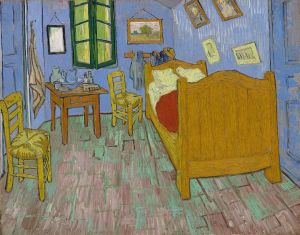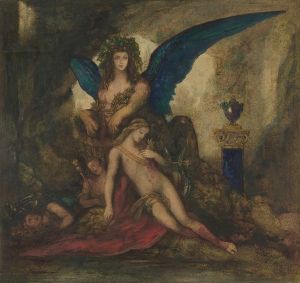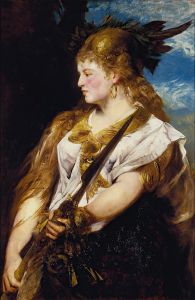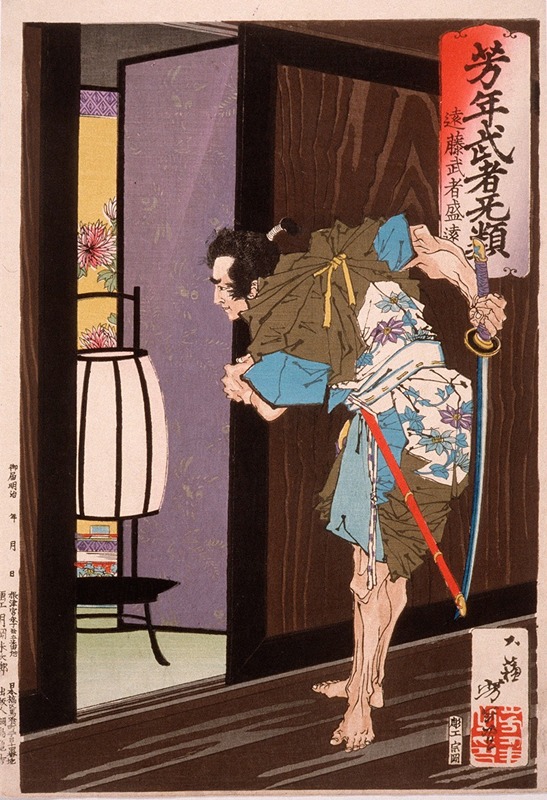
Endō Musha Morito Approaching Kesa’s Bedroom
A hand-painted replica of Tsukioka Yoshitoshi’s masterpiece Endō Musha Morito Approaching Kesa’s Bedroom, meticulously crafted by professional artists to capture the true essence of the original. Each piece is created with museum-quality canvas and rare mineral pigments, carefully painted by experienced artists with delicate brushstrokes and rich, layered colors to perfectly recreate the texture of the original artwork. Unlike machine-printed reproductions, this hand-painted version brings the painting to life, infused with the artist’s emotions and skill in every stroke. Whether for personal collection or home decoration, it instantly elevates the artistic atmosphere of any space.
Tsukioka Yoshitoshi (1839–1892) was a renowned Japanese artist known for his work in ukiyo-e, a genre of woodblock prints and paintings that flourished in Japan from the 17th through 19th centuries. One of his notable works is "Endō Musha Morito Approaching Kesa’s Bedroom," which is part of his series "One Hundred Aspects of the Moon" (Tsuki hyakushi), created between 1885 and 1892. This series is celebrated for its exploration of historical and mythical themes, often centered around the moon, which serves as a unifying motif.
The print "Endō Musha Morito Approaching Kesa’s Bedroom" depicts a dramatic and poignant scene from a well-known Japanese legend involving the samurai Endō Morito and the lady Kesa Gozen. The story is a tragic tale of love, honor, and sacrifice, which has been a popular subject in Japanese literature and art. In the narrative, Endō Morito falls in love with Kesa Gozen, a woman of great beauty and virtue who is already married. Driven by his obsession, Morito pressures Kesa to be with him, but she remains loyal to her husband. In a twist of fate and in an attempt to protect her husband, Kesa devises a plan that ultimately leads to her own death, a sacrifice that leaves Morito filled with remorse.
Yoshitoshi's depiction captures the tension and emotion of the moment when Morito approaches Kesa’s bedroom, unaware of the tragic outcome that awaits. The composition is notable for its use of dramatic contrasts and the interplay of light and shadow, which heightens the emotional intensity of the scene. Yoshitoshi's mastery in portraying human emotion and psychological depth is evident in the expressions and postures of the characters, which convey a sense of foreboding and inner turmoil.
The "One Hundred Aspects of the Moon" series, including this particular print, is significant not only for its artistic merit but also for its reflection of the cultural and historical context of the Meiji period in Japan. During this time, Japan was undergoing rapid modernization and Westernization, and there was a growing interest in preserving traditional Japanese culture and stories. Yoshitoshi's work is often seen as a bridge between the old and the new, combining traditional ukiyo-e techniques with innovative approaches to storytelling and composition.
"Endō Musha Morito Approaching Kesa’s Bedroom" exemplifies Yoshitoshi's skill in blending narrative and visual art to create works that are both beautiful and thought-provoking. The print is a testament to his ability to capture complex human emotions and moral dilemmas, making it a valuable piece for understanding the cultural and artistic landscape of late 19th-century Japan. Today, Yoshitoshi's works, including this print, are highly regarded and continue to be studied and appreciated for their artistic and historical significance.






